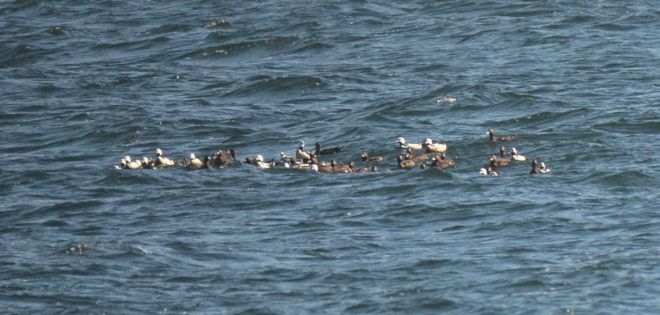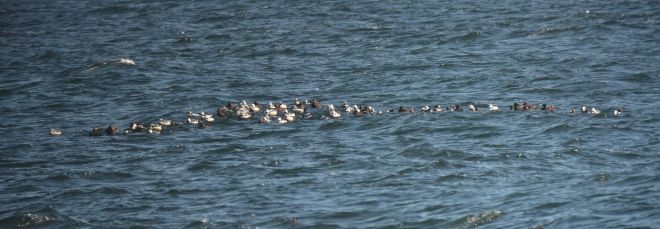For the last 18 days a vagrant north American Gull has been the main draw for visiting birders to Oxford’s Farmoor Reservoir. This bird was first found on 7th April whilst I was away in Estonia. On receiving the text alert I sighed and wrote it off as the latest major county bird to turn up when I am abroad, Black-winged Stilt and Spotted Sandpiper being the most notable past instances. But one can hardly not go anywhere for fear of missing a county tick. I needn’t have concerned myself, because this cracking first summer Bonaparte’s Gull has remained in Oxfordshire ever since.
For the first 10 days of it’s stay the gull was either confiding or elusive in turn. It seemed to favour Farmoor early in the day before disappearing elsewhere, and on some dates was absent entirely. I myself missed it three times in the days after returning from Estonia. Then on Easter Monday I got the tip off and after a mad dash finally gained what for me was a county list addition. But this is actually the fifth record for Oxfordshire, and all at the same site.
Since Easter the “Boney” appears to have taken up residence, favouring a pontoon at the south end of Farmoor 2, the larger of the twin reservoirs here. Some excellent images of the bird on or around that structure have appeared in local media, which whetted my appetite to take a better look. On my second visit last Friday 21st the bird was posing perfectly on the pontoon but I didn’t have my camera with me.
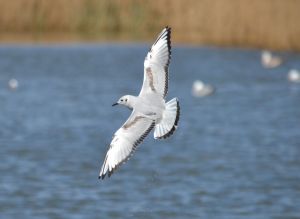
2015 Bonaparte’s Gull in Dorset
I had captured the above flight shot of this species two years ago at Radipole Lake in Dorset (see here). Bonaparte’s Gull is mainly seen in Britain in late winter or spring, and the Oxon 1w / s bird is one of three in England at the present time. Noticeably smaller and more delicate looking than Black-headed Gull, they have a finer, all-black bill; and immatures have pinkish legs and an attractive upper wing pattern that to me seems to stand out at a distance. The flight pattern is often described as being Tern-like.
Having brought my Oxon year list (had I been keeping one) up to 145 in the period under review, I resolved at the weekend to take a little gardening leave. But first today I would pay a quick visit to Farmoor to seek portrait shots of this Gull to go with the Dorset flight pictures. Or that was the plan, anyhow. I often start the day with good intentions regarding household chores. As I walked around F2, patch worker Dai (who has a vehicle permit) stopped to say the BG was sitting atop the reservoir wall. But when I reached the favoured location the bird was perched some way out on a buoy.
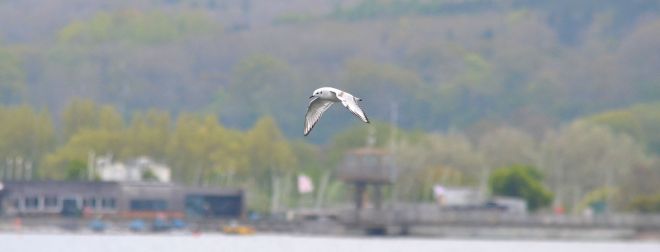
Bonaparte’s Gull over Farmoor Reservoir
For the next 90 minutes or so my quest spent it’s time flying around the northern end of F2, at times settling on the water or the said buoy. There was a lot of disturbance from passing anglers cars and power boats out on the water, the latter making it increasingly unlikely the gull would favour the pontoon today. I rather like the above image that conveys how well this gull stands out from the background. Then the weather deteriorated.
A squall blew in and I took cover in one of the “bus shelters” at this part of the site. Another birder joined me and pointed out the BG again walking along the reservoir wall towards us, seemingly picking midges from the inside wall. I attempted to get pictures as it approached but the light was very murky. When the rain stopped the bird was nowhere to be seen.
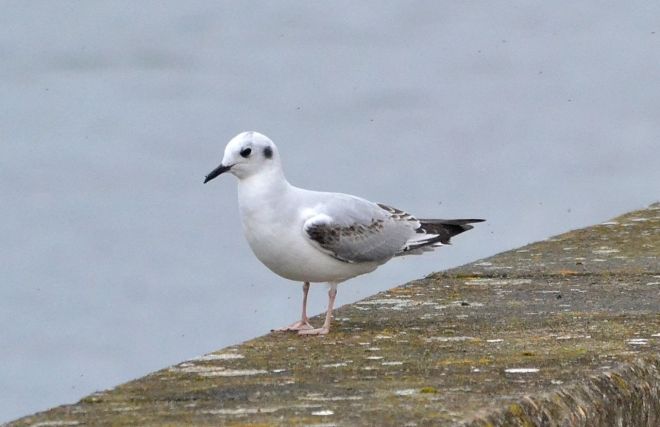
First winter / summer Bonaparte’s Gull at Farmoor Reservoir, Oxon
Conscious that the entire morning had now passed with no attention at all having been paid to the day’s task list, I gave up on the BG returning to the pontoon. But as I walked further there was the local celebrity again in exactly the same pose as before, coming along the top of the wave wall towards me feeding on insects along the inner edge. And this (above), for what it’s worth is my own muddy, grainy best effort at a portrait shot of the Farmoor Bonaparte’s Gull.
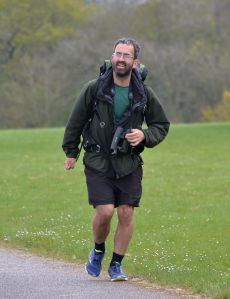
Marathon man: Oxon’s legendary jogging birder
Footnote: While writing this I received a text from another local celebrity Tom (pictured above) – who originally found this gull – saying two Black Tern, the first of the season had arrived on F2. So it was back out to Farmoor to see those. By 5:30 pm no gardening or any other household chores had even been attempted. But I shall start tomorrow, or at least set out with good intentions!








